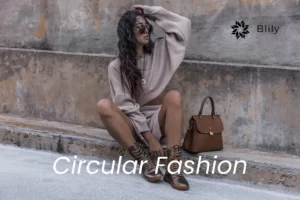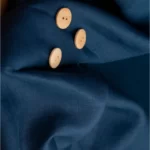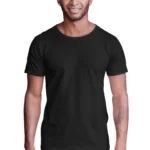Tanace Organics Pvt. Ltd
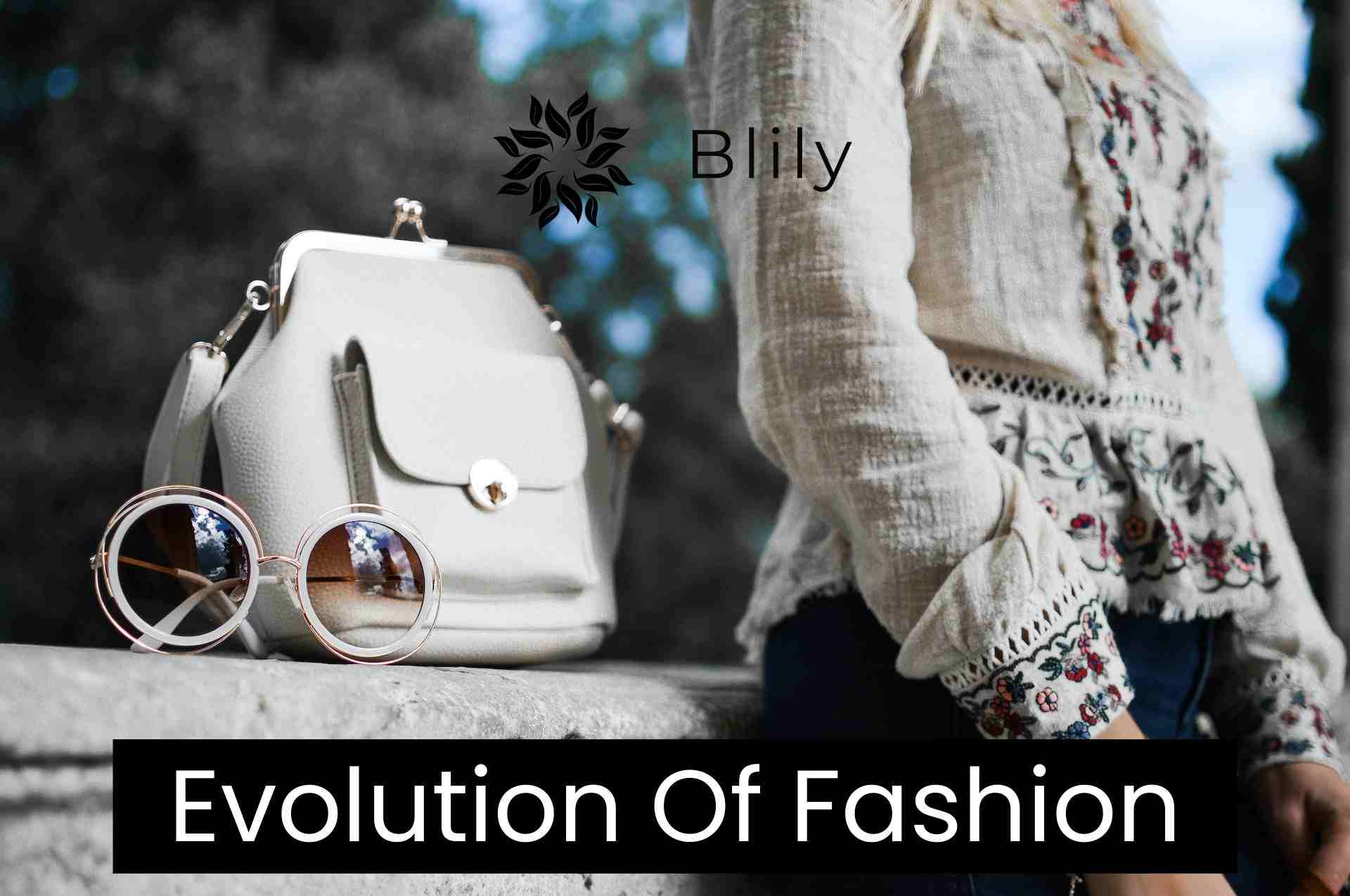
Empowering the Evolution of Fashion: From Ancient Times to Modern-Day
Style is always an important part of a person. From ancient times to the present, work clothes and accessories have been used to cover the body as well as look and fashion. Understanding advances in design is crucial to understanding the value of creativity and innovation that create the businesses we need today. In this article we will discuss about the evolution of Fashion and explore the historical details of the design, examining the patterns, textures and decoration of each. We will also examine how style has changed to meet the needs of today’s culture, including the rise of rapid design and increasing commercial applications.
Table of Contents
Ancient Fashion
Old-fashioned culture varies greatly over time. For example, in ancient Egypt most clothing was made of linen, making it light and breathable due to the hot weather. In ancient Greece, garments were often draped or wrapped, and the length and style of the garment reflected the social status of the wearer. In ancient Rome, clothing became more ornate and ornate, and a variety of fabrics and colors were used to show wealth and status. Ancient fashion is also influenced by factors such as climate, geography, and available materials. Despite these differences, clothing in ancient times often served a similar function in personal and social expression. Here are some classes of Ancient fashion:
- Clothing in Prehistoric time
- Mesopotamian Clothing
- Egyptian Clothing
- Greek and Roman Clothing
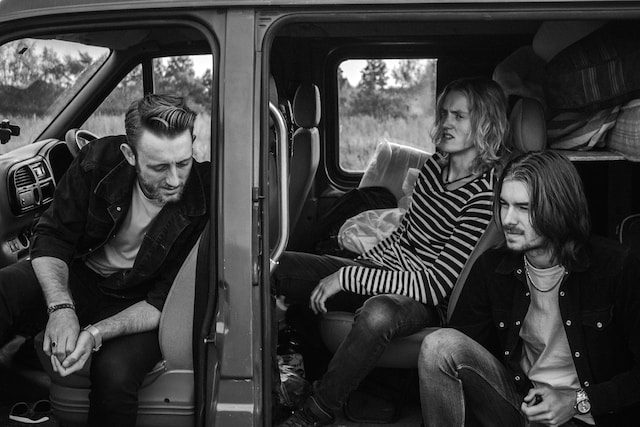
Clothing in Prehistoric time
Clothing has been important to people since ancient times, and its content is filled with images of safety and social relations. Ancient people used to wear clothes made from the skin and hair of living things, tailor-made for their bodies with simple sewing methods. As success improves, so does the complexity and variety of outfits. For example, in ancient Mesopotamia, men wore skirts and tunics, and women wore long skirts. The old style, showing the lifestyle and virtue of the time, satisfies the need and fulfills the behavior and culture of Ancient fashion.
Mesopotamian Clothing
Mesopotamia, now in the Middle East, is an ancient development of the 4th and 2nd centuries BC. The clothes worn in Mesopotamia were influenced by the climate and included materials such as wool. Men wear skirts and tunics made of wool or calfskin, while women wear long skirts made of cloth or wool. These garments are often animated with woven or woven designs that hang from one or both shoulders north. Frills such as belts, ornaments and headbands are also worn to enhance the look of the shirt.
The use of cosmetics, including eyeliner and henna, is also common across many cultures. Mesopotamian clothing served as a means of meeting the world’s needs and social and personal culture, as well as elegant clothing and special beauty for the rich and powerful.
Egyptian Clothing
Egyptian clothing was influenced by the environment and included materials such as cloth. Clothing varies from time to time and by social class, but certain elements such as ruffles and drapes are often used. Men wear skirts or skirts made of cloth or cowhide, while women wear long flowing skirts made of cloth or silk. The rich and powerful usually wear beautiful and bright clothes, while ordinary townspeople wear simple clothes. Clothing also plays an important role in leadership and service, with clergy and priests wearing robes in office.

Greek and Roman Clothing
Greek and Roman clothing was influenced by the environmental, soil and social conditions of the period. In ancient Greece, clothing was simple and functional, with tunics for men and peplos or tunics for women. Attire in Rome features a more formal and friendly class. The upper-class people wore clothing made of wool or silk, while the common people wore modest clothing such as tunic or scarf. The garments are often designed with weaves, gemstones, and various ornaments, which indicate the wealth and status of the wearer. According to other ancient societies and ancient fashion, clothes played an important role in urban activities and these clothes were worn for these events.
Medieval Clothing
Medieval clothing varies greatly by class, region, and time. In the early Middle Ages, clothing was generally simple and useful, made of wool or linen and sewn for warmth and durability. As the Middle Ages progressed, clothing became more elaborate and elegant, especially for the upper classes. While women’s clothing usually includes tights and corsets, men wear jeans, leggings and trousers.
Bright colors and luxurious fabrics such as silk and velvet were popular with the wealthy. Medieval clothing often included accessories such as hats, belts, and jewelry to convey culture and wealth. Here are some classes of Medieval Clothing:
- Clothing in the Middle Ages
- Byzantine Clothing
- Renaissance clothing
Clothing in the Middle Ages
The Middle Ages, from the 5th to the 15th centuries, was a period of change and prosperity in Europe. In the early Middle Ages, clothing was simple and utilitarian, with tunics and trousers of wool or material for men and long skirts or skirted sweaters for women.
As the Middle Ages progressed, clothing became more complex and rich with the rise of new materials such as silk and velvet. Upper-class men wear tight bodices and leggings, while women wear long, intricate suits with sleeves and bodices. Medieval clothing played an important role in distinguishing between social classes and status, with rich traditions specifying who could wear certain textures and different types of clothing.
Byzantine Clothing
Byzantine dress worn in the Byzantine kingdom from the 4th to the 15th centuries was strongly influenced by Roman and Greek clothing, as well as the region’s contacts with Eastern societies such as the Persian and Bedouin worlds. Men wear tunics or dresses made of silk, cloth, or wool, often with gold woven and enriched motifs. Women wear long skirts or wide sleeves with pins or ties. The use of rich colors such as purple and gold is typical, and the garments often feature wonderful patterns and motifs. Byzantine dress is a mix of Eastern and Western influences, reflecting the country’s diverse social and political history.
Renaissance clothing
From the 14th to the 17th centuries, the Renaissance was a period of growth in thought, society, and logic in Europe. The clothes of this time are told in terms of balance, poise and style. Men have the right to wear trousers, vests and trousers, often woven with incredible patterns, from rich materials such as silk and velvet. Women wear beautiful dresses, often made of silk or other rich textures, with good bodies, flowing skirts, and puffy sleeves. Renaissance style was influenced by the crafts and traditions of the time, with clothing arrangements reflecting the goals of efficiency, simplicity and harmony.

The 18th and 19th Century Fashion
It was a time of great fashion change during the 18th and 19th centuries. In the 18th century, women’s clothing with wide rings and beautifully embroidered clothes became more and more beautiful. Menswear was also refined and suits became the norm.
In the 19th century, the Industrial Revolution led to mass production of clothing, making fashion more accessible to the middle class. With the introduction of “waist waist” and flowers, women’s clothing became more and more comfortable. With the advent of the three-piece suit, men’s clothing also became more fashionable.
The 19th century also saw the rise of fashion magazines, which helped spread new styles and trends. This era also categorized in different category of ancient fashion
- Rococo Fashion
- Georgian Fashion
- Victorian Fashion
Rococo Fashion
The 18th and 19th centuries saw major social and political changes that were reflected in the clothing style of the time. The period of luxury that emerged in the mid-18th century was explained by detail and planning, with better trimmings, stripes, and quilts. Skirts and corsets were used in women’s clothing, and coats, petticoats and trousers in men’s clothing.
Later, in the 18th century, the uprisings in France marked a major change in design, as a result of which it was simpler, more convenient. The royal style promoted by the court of Napoleon Bonaparte, represented by high-waisted dresses for women and tailored suits for men. With the rise of the tuxedo and formal hat, menswear also became more formal. The clothes of the 18th and 19th centuries were influenced by friendship and politics, showing the positive changes and goals of the time.
Georgian Fashion
Georgian design evokes the style of dress that emerged during the reign of the four George Lords of Great Britain between 1714 and 1837. Women’s clothing of this period included the Realm-style bodice of the mid-19th century and the wide skirts and harnesses of the mid-18th century. Men’s clothing includes formal suits, petticoats and hats, as well as loose clothing such as tunics and trousers. The rise of new assembly techniques and materials influenced style in the Georgian era and laid the groundwork for mass garment production and design freedom.
Victorian Fashion
The Victorian era, from 1837 to 1901, was a time of significant social, political, and change, reflected in the clothing of the time. Victorian design emphasized manners, etiquette, and manners, with clothing ranging from sophistication and luxury to realistic and practical. Women’s clothing from this period consisted of long skirts, fitted bodices, and various undercuts such as sashes and petticoats. Victorian design was influenced by friendships and relationships that reflected the virtues and beliefs of the time, and was also influenced by advances in assembly techniques and materials.

The 20th Century Fashion
The 20th century was a time of rapid change, with new trends emerging every decade. In the early 1900s, women’s clothing featured the “Gibson girl” style with long, pleated skirts. The 1920s saw flapper styles with skirts and loose, boyish silhouettes. The 1940s saw the impact of World War II on fashion and functional utility models became fashionable.
The 1960s and 70s brought “hippie” and “modern” styles with beautiful colors and patterns. The 80s were characterized by big hair, neon colors and suits. The 90s saw grunge fashion featuring ripped jeans and flannel shirts. The 2000s saw a mix of vintage and modern, with styles like low-cut jeans and oversized sunglasses.
- Fashion of the 1920s and 1930s
- Fashion of the 1940s and 1950s
- Fashion of the 1960s and 1970s
- Fashion of the 1980s and 1990s
Fashion of the 1920s and 1930s
Twentieth century design has changed dramatically, with different designs and styles emerging every decade. The 1920s and 1930s were marked by a move towards more modern clothing that reflected the changing style and mood of the time. The famous flapper style, which included short skirts, loose silhouettes and sleeveless dresses and short skirts, was prominent in women’s clothing of this period.
Menswear has also changed a lot with the creation of sportswear and garments such as polo shirts and knitted sweaters. Developments in assembly and materials, such as the use of artificial materials, also affected the style of the period. The designs of the 1920s and 1930s were a reflection of the social and social changes of the period and paved the way for the fashion industry that we will focus on today.
Fashion of the 1940s and 1950s
The 1940s and 1950s were marked by political and social changes that influenced design. During World War II, balance and proportions became effective and efficient. Women’s wear, featuring tight skirts, padded shoulders and a more masculine silhouette, illustrates the changing nature of women’s male roles in times of crisis. With the emergence of designed textures and the rise of ready-to-wear, innovation and product development also influenced the style of the time. The designs of the 1940s and 50s are a reflection of the social and social changes of the time and have influenced the style to this day.
Fashion of the 1960s and 1970s
The 1960s and 70s were marked by major social changes that had a huge impact on trends. The 1960s saw a more formal, more formal, so-called “modern” style with a lot of power, a set of examples, and many restrictions. The rise of youth culture and the change of conflict also influence design, with hipster and boho styles on the rise in loose clothing, beautiful materials, and many simple fashions. The design of the 1960s and 70s was a change in the people and thoughts of that time and still influences the style of today.
Fashion of the 1980s and 1990s
The 1980s and 90s marked a period of social and political change, and it was the wisdom of these movements that created this era. The ’80s stood out for beautiful styling with mainstream styles like long hair, neon shades, and shoulder straps. Designs were influenced by music, and the rise of New Wave, Troublemakers, and hip bouncing styles influenced clothing at that time. The rise of commercialization and the desire for luxury also became a part of fashion during this period, and original logos and designs became the norm.
Modern-Day Fashion-evolution of fashion
Modern fashion is influenced by many factors such as popular culture, technology and sustainable Fashion. Fashion, which quickly produced cheap clothing to meet demand, has grown in popularity in recent years, raising concerns about its impact. However, there is a shift towards being more efficient and ethical as both designers and consumers want to reduce waste and promote the lean job fair.
Social media also has a huge impact on fashion, with influencers and bloggers shaping trends and promoting new styles. Overall, modern fashion is a dynamic and ever-changing Fashion industry focused on sustainability, diversity and inclusion.
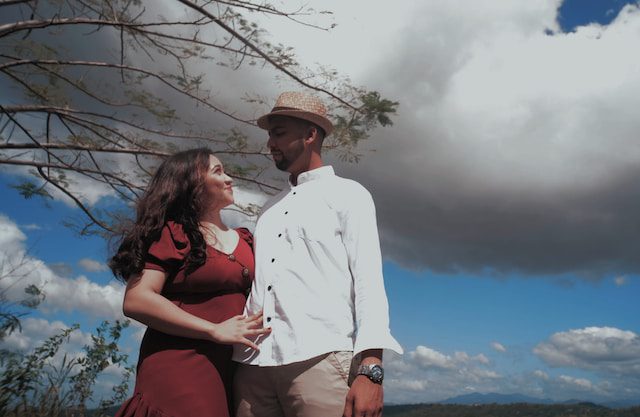
- Contemporary fashion trends
- Fast fashion and its impact
- Sustainable fashion and its emergence
Fashion design is a dynamic and ever-changing industry, with the latest fads and designs constantly emerging. Fast fashion has recently become a major force in fashion; Stores like Zara, H&M, and Everlastingly 21 are churning out understated yet on-trend dresses super fast. But the impact of the rapid development of the fashion industry and the safety of workers became a design issue, which led to a change in support for restructuring.
Energy-efficient models that limit the natural and social impact of clothing design seem to have become an important factor in the design industry. This includes the use of eco-friendly materials such as natural cotton, reusable materials and sustainable colors, and ethical manufacturing practices such as fair working guidelines and reducing waste. Product designers and architects have captured the attention of consumers looking for designs that are both stylish and social.
The Future of Fashion
- Technological innovations and their impact on fashion
- The role of sustainability in the future of fashion
Current design is a dynamic and steadily evolving fashion industry, with recent fads and styles arising constantly. As of late, quick style has turned into a prevailing power in the design world, with retailers like Zara, H&M, and Perpetually 21 contributing modest and popular dresses at a fast fashion speed. Notwithstanding, the effect of quick style on the climate and laborers in the design business has turned into a developing concern, prompting a shift towards more economical design rehearses.
Feasible design, which looks to limit the ecological and social effect of dress creation, has arisen as a significant pattern in the style business. This incorporates the utilization of eco-accommodating materials, like natural cotton, reused textures, and regular colors, as well as moral creation rehearses, like fair work guidelines and lessening waste. Practical design brands and originators are turning out to be progressively well known among shoppers who are searching for design that is both a la mode and socially capable.
Fast fashion refers to a business model within the fashion industry that emphasizes the rapid production and delivery of inexpensive clothing and accessories to meet current fashion trends. It involves quickly replicating the latest runway styles and making them available to consumers at extremely affordable prices. Fast fashion brands often prioritize speed and efficiency in their supply chains, allowing them to introduce new collections frequently throughout the year.
However, the fast fashion model has been criticized for its negative social and environmental impacts. The rapid turnover of styles contributes to overconsumption and excessive waste, as garments are often discarded after only a few wears. The pressure to produce cheap clothing at a high pace can lead to poor working conditions and low wages for factory workers, particularly in developing countries. Additionally, the fast fashion industry’s heavy reliance on synthetic materials and intensive manufacturing processes can contribute to environmental pollution and resource depletion.
In recent years, there has been growing awareness and movement toward more sustainable and ethical fashion practices as consumers and industry stakeholders seek to address the challenges posed by fast fashion.
Conclusion
- Recap of the history of fashion industry
- Significance of understanding Evolution of fashion
From ancient times to the present, style has been an important part of human culture, reflecting changes in social, social and economic conditions. Throughout history, design has evolved due to changing cultural trends and technological advances.
Understanding the evolution of fashion and design is important for several reasons. First, it provides a deep understanding of the relationship and true meaning between clothing and style. Second, it helps us understand the social, economic patterns, and sustainable fashion that influence the creation of time. Finally, it can offer suggestions for future business models.
In conclusion, design is more than just clothes. It is the declaration of our way of life, our history and our freedom. By understanding how design has evolved, we can easily understand its importance and develop its future in a controlled and careful way.



